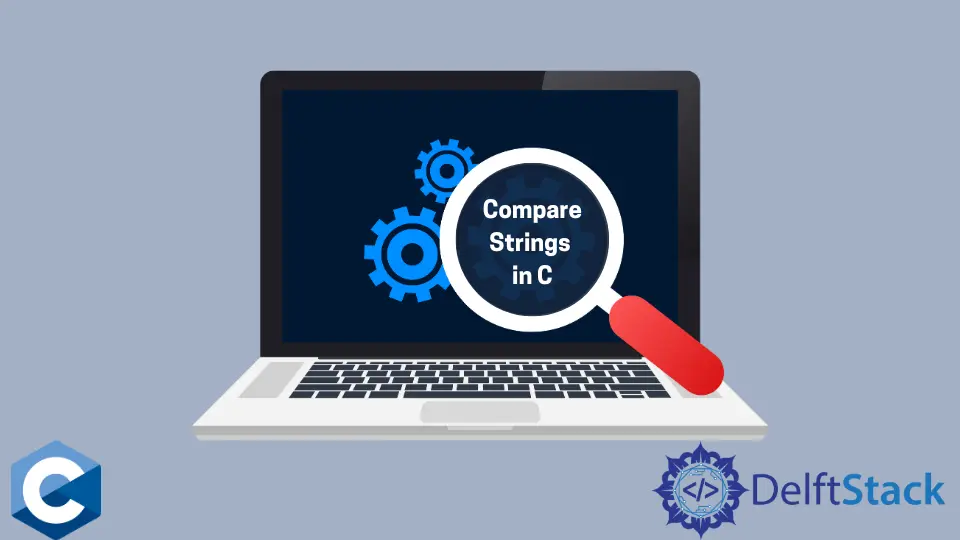C 语言中比较字符串

本文将介绍关于如何在 C 语言中比较字符串的多种方法。
使用 strcmp 函数比较字符串
strcmp 函数是定义在 <string.h> 头的标准库函数。C 风格的字符串只是以 0 符号结束的字符序列,所以函数必须对每个字符进行迭代比较。
strcmp 接受两个字符字符串,并返回整数来表示比较的结果。如果第一个字符串在词法上小于第二个字符串,则返回的数字为负数,如果后一个字符串小于前一个字符串,则返回的数字为正数,如果两个字符串相同,则返回的数字为 0。
需要注意的是,在下面的例子中,我们将函数的返回值反转,并将其插入到 ?:条件语句中,打印相应的输出到控制台。
#include <stdio.h>
#include <stdlib.h>
#include <string.h>
int main() {
const char* str1 = "hello there 1";
const char* str2 = "hello there 2";
const char* str3 = "Hello there 2";
!strcmp(str1, str2) ? printf("strings are equal\n")
: printf("strings are not equal\n");
!strcmp(str1, str3) ? printf("strings are equal\n")
: printf("strings are not equal\n");
exit(EXIT_SUCCESS);
}
输出:
strings are not equal
strings are not equal
使用 strncmp 函数只比较部分字符串
strncmp 是定义在 <string.h> 头文件中的另一个有用的函数,它可以用来只比较字符串开头的几个字符。
strncmp 的第三个参数为整数类型,用于指定两个字符串中要比较的字符数。该函数的返回值与 strcmp 返回的值类似。
#include <stdio.h>
#include <stdlib.h>
#include <string.h>
int main() {
const char* str1 = "hello there 1";
const char* str2 = "hello there 2";
!strncmp(str1, str2, 5) ? printf("strings are equal\n")
: printf("strings are not equal\n");
exit(EXIT_SUCCESS);
}
输出:
strings are equal
使用 strcasecmp 和 strncasecmp 函数比较忽略字母大小写的字符串
strcasecmp 函数的行为与 strcmp 函数类似,但它忽略字母大小写。该函数与 POSIX 兼容,可与 strncasecmp 一起在多个操作系统上使用,后者实现了对两个字符串中一定数量的字符进行不区分大小写的比较。后者的参数可以和类型为 size_t 的第三个参数一起传递给函数。
注意,这些函数的返回值可以直接用于条件语句中。
#include <stdio.h>
#include <stdlib.h>
#include <string.h>
int main() {
const char* str1 = "hello there 2";
const char* str3 = "Hello there 2";
!strcasecmp(str1, str3) ? printf("strings are equal\n")
: printf("strings are not equal\n");
!strncasecmp(str1, str3, 5) ? printf("strings are equal\n")
: printf("strings are not equal\n");
exit(EXIT_SUCCESS);
}
输出:
strings are equal
strings are equal
Founder of DelftStack.com. Jinku has worked in the robotics and automotive industries for over 8 years. He sharpened his coding skills when he needed to do the automatic testing, data collection from remote servers and report creation from the endurance test. He is from an electrical/electronics engineering background but has expanded his interest to embedded electronics, embedded programming and front-/back-end programming.
LinkedIn